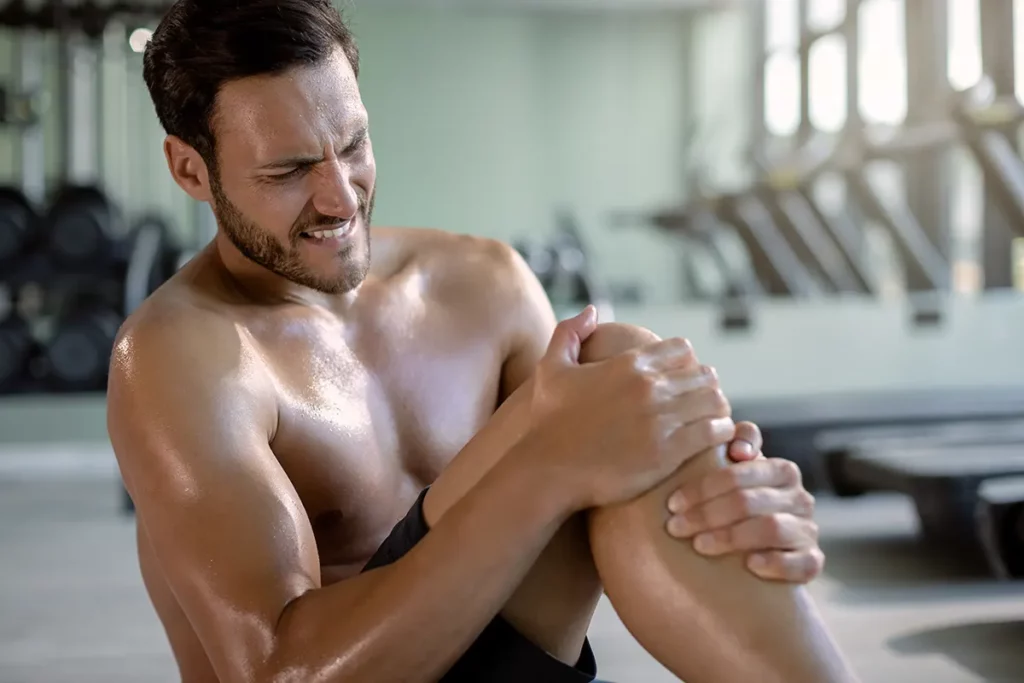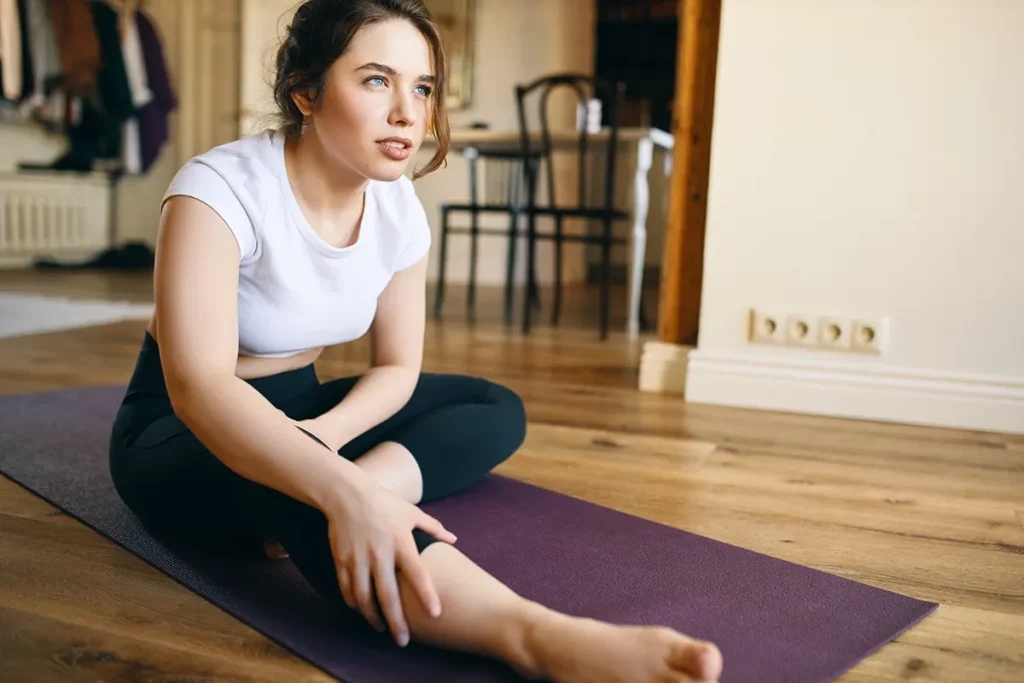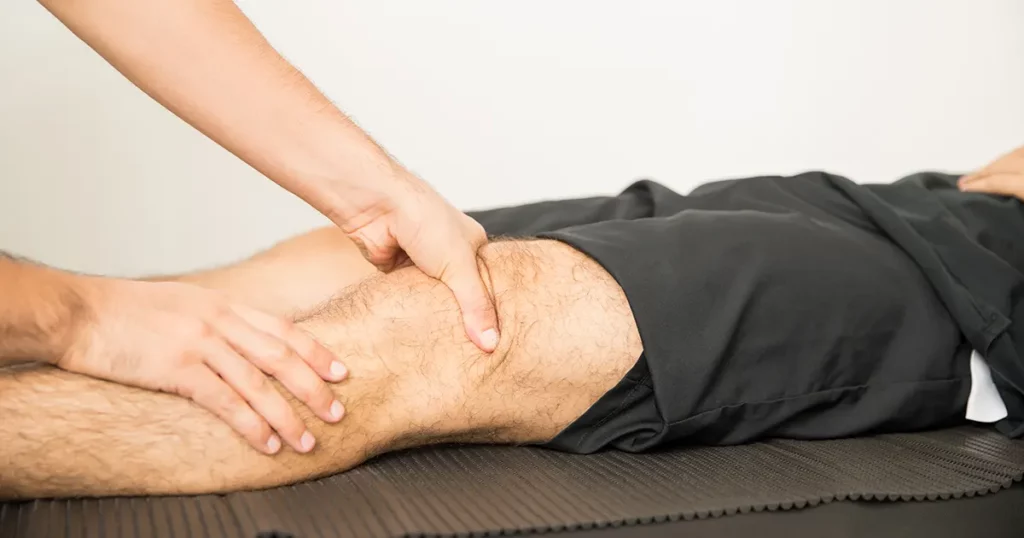When it comes to knees, we panic at the first sight of pain. The following blog is designed for you to make sense of your knee pain and what it may or may not be.
When your knee issue isn’t a knee issue
When a knee issue isn’t a knee issue! The dreaded knee! The one thing that strikes fear into the hearts of many as soon as it hits. What is it? Does any of this sound familiar?
- I’ve never had knee pain before. What’s this all about?
- I hope I haven’t damaged my knee completely
- I don’t want to have to get surgery
- I hope I’m still going to be able to train/run!
- It must be my weight
- My knees are giving in, I’m for the scrap heap
Knee pain is such an emotive injury and really affects people’s emotions as much as it does their physical body. We hear stories constantly about footballers and sports people who “did their cruciate” never to play again. Countless amateur sports people who had to undergo knee surgery and never played again. Older relatives who need knee replacements because of arthritic knees. The whole bubble surrounding knee pain is a negative shitstorm that sends us into panic mode as soon as it strikes! But here’s the deal. It doesn’t need to be! Yeah, you heard me! KNEE PAIN IS RARELY A PROBLEM WITH THE KNEE.
I’ll let that one sink in for a while. I recently had a bit of an online spat on an online forum where a person had been recommended MRI and X ray for a knee issue that wouldn’t go away. Even after he went to 1 physio (ahem) and did the exercises diligently. SO what’s the problem with this I hear you say? Well, today there is far too much of an overreliance on medical imaging to diagnose. I have seen far too many people who have received surgery for an issue which simply did not need surgery to fix. Any abnormality in the MRI is immediately assumed to be the issue.
Physical Therapists are trained with special orthopedic tests to recognise specific structural knee injuries such as ligament tears and meniscus problems etc. The vast majority of people who come into my clinic with knee pain pass these tests with flying colours and report no pain whatsoever! If they did, I will ( and have) recommend they get an MRI to rule out (or in) structural issues. So if it’s not structural, what is it? Aha, and such is the million dollar question. This I’m afraid is a multi faceted answer, and each case is extremely individual. But here are a few observations I have made over the years:
- Your foot mechanics need some love
- Your hip control needs some love
- Your quads are as tight as a miser at Christmas
- Your perception that your knee is fu*@ked.
Foot mechanics need some love
How your feet move and interact with the ground, has a direct impact on what happens at the knee. If the foot and ankle can’t move freely, that range of motion is going to need to come from somewhere else, usually the knee. If you have ever sprained an ankle, the likelihood that you have some muscles gone into protective mode around the foot and calf, which leads to a lack of movement. The lack of movement and requirement for extra space from the knee joint can create a perceived threat around the knee, causing pain, which leads to catastrophising and worry. Likewise, the positioning of your foot can impact on the knee, and its alignment. If you have a pronated foot, it can turn the leg inwards, changing the position of the knee joint and putting strain in around the kneecap.
Your hip control needs some love
Like the foot, the hip muscles (glutes, tfl, glute medius/maximus) basically your arse and the side of your arse, have a big roll in knee problems. Studies have shown people who have weak hips end up having pain in their knees. Part of the reason is, if the hips can’t control what the leg is doing, the femur tends to turn in, especially when running or lifting weights. Again, this can cause issue with the tracking of the knee, resulting in pain in around the kneecap. Word of caution! Be warey of the term “patellofemoral syndrome” what they are basically saying here is, you’ve pain in your knee, and we don’t know what it is!
Your quads are tight
There are various different reasons why this can be an issue. But I’m going to concentrate on one muscle in particular. The Rectus Femoris or rec fem for short is a muscle that crosses both the hip and the knee. The tendon of the muscle goes directly over your kneecap and attaches just below the knee on your lower leg. If this gets tight, the tendon can be pulled, with people often reporting pain “in the knee itself” I have found that this tight rec fem, often comes hand in hand with less than optimal hips, as it seems to over compensate for the roll of the glutes in knee stabilisation.
Other reasons your quads may affect the knee is knee cap alignment. If certain muscles are tight, they can pull the knee cap out of the grove, creating a misalignment which over time can cause pain. Since we’re in the general top half of your leg area, it’s also important to note that the hamstrings can also play a role in knee pain. Tight hamstrings on the inside of the leg can pull on other structures like the meniscus and result in a meniscus tear if severe enough (remember what we were saying about the knee not being the issue, its a symptom?)
Your perception of your injury
This, I would hazard to guess is probably the most important aspect to this whole article. Your perception of how bad your injury is, can feed into your pain experience, and make it seem even worse. Think about it. Look at people who overthink getting needles, or overthink jumping off a bridge etc. Their perception of what they are doing has put the breaks on and they have gone into a “fight or flight” situation which ramps up their nervous system and makes everything worse!
The same goes for an injury. If you overthink the severity of the injury, you will make it worse, because your brain will sense a threat and put the breaks on. And what does it do to protect you? It creates pain. It’s funny, just after I started writing this article, I had a client in who was suffering from knee pain, and again, was so worried he wouldn’t be able to exercise. On taking his history, I discovered he was in an accident with a car many years ago which resulted in knee surgery. When he came to see me, he had just been in an accident with a car, on his bike, yet he didn’t hurt his knee. But his knees started paining. Why? Because his brain registered this type of incident a threat to his knee. He had been here before and done damage to his knee. So the next time it happened, it automatically thought to protect the knee to prevent any further damage. Was there any mechanical issue with his knee? Sure, his muscles were tight all around the area more than likely as a response from the “threat” he was exposed to! But once we were able to reduce the threat, through a multifactorial approach, he reported a 100% difference within two weeks and after 1 session. Did I do That? Nope. I gave him the gun but he fired the shots.
So, there you have it. Hopefully, if you have been suffering through knee pain this might give you a bit of an idea as to what might be wrong or it may serve to put your mind at ease. If you have any questions don’t hesitate to get in touch.
Your in motion. Mark





